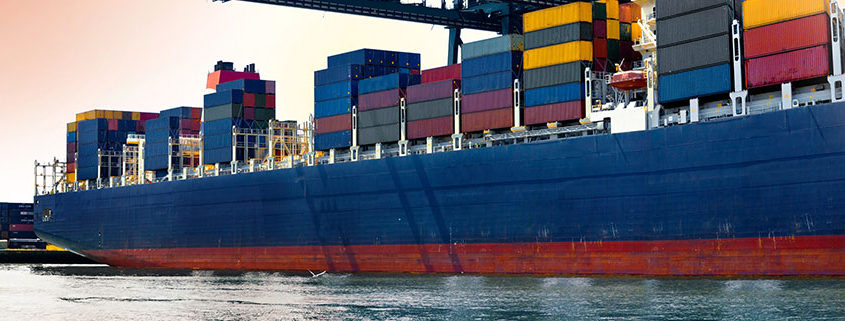Some vessels seized by authorities and creditors, with others refused entry to ports unload after South Korean company loses the support of banks.
The bankruptcy of the Hanjin shipping line has thrown ports and retailers around the world into confusion, with giant container ships marooned and merchants worrying whether hundreds of tonnes of goods being carried by the South Korean company will reach shelves.
The company filed for bankruptcy protection on Wednesday and stopped accepting new cargo. With its assets frozen, ships were refused permission to offload or take aboard containers because there were no guarantees that tugboat pilots or stevedores would be paid.
Hanjin is the world’s seventh-largest container shipper and the news left cargo headed to and from Asia in limbo. There were reports that some Hanjin ships had been seized in China on behalf of creditors.
Seeking to contain the fallout, a South Korean court said it would begin proceedings to rehabilitate the carrier – which would allow Hanjin to take legal action in other countries to keep its ships and other assets from being seized.
But the court action was seen as mainly procedural and an eventual liquidation of assets was likely, analysts and industry officials said.
“Unlike dry cargo, liner shipping is all about marketing and service reliability – we haven’t seen any large carriers come back from collapse,” said Rahul Kapoor, a director at maritime consultancy Drewry Financial Research Services.
“There is a loss of faith among customers. It’s very unlikely Hanjin can come back from the ashes.”
Hanjin’s banks decided to end financial support for the shipper this week and many of its vessels were denied entry to ports or left unable to dock as container lashing providers worried they would not be paid. This included the port of Busan, South Korea’s largest.
The Korea International Trade Association said on Thursday that about 10 Hanjin vessels in China have been either seized or were expected to seized by charterers, port authorities or other parties. That adds to one other ship seized in Singapore by a creditor earlier in the week.
The collapse comes at a time of high seasonal demand for the shipping industry ahead of the year-end holidays.
In the US, at the ports of Los Angeles and Long Beach, the nation’s busiest port complex, three Hanjin container ships, ranging from about 700 feet to 1,100 feet long, were either sitting offshore or anchored away from terminals on Thursday. A fourth vessel that was supposed to leave Long Beach on Thursday morning remained anchored inside the breakwater.
The National Retail Federation, the world’s largest retail trade association, wrote to the US secretary of commerce, Penny Pritzker, and the Federal Maritime Commission chairman, Mario Cordero, on Thursday, urging them to work with the South Korean government, ports and others to prevent disruption.
Hanjin represents nearly 8% of the trans-Pacific trade volume for the US market and the bankruptcy was having “a ripple effect throughout the global supply chain” that could cause significant harm to both consumers and the US economy, the association wrote.
“Retailers’ main concern is that there [are] millions of dollars’ worth of merchandise that needs to be on store shelves that could be impacted by this,” said Jonathan Gold, the group’s vice president for supply chain and customs policy. “Some of it is sitting in Asia waiting to be loaded on ships, some is already aboard ships out on the ocean and some is sitting on US docks waiting to be picked up. It is understandable that port terminal operators, railroads, trucking companies and others don’t want to do work for Hanjin if they are concerned they won’t get paid.”
Hanjin has been losing money for years and filed for bankruptcy protection a day after its creditors, led by a state-run bank, refused to prop it up.
Other shipping lines were moving to take over some of the Hanjin traffic but at a price, with vessels already are operating at high capacity because of the season. The price of shipping a 40ft container from China to the US jumped by up to 50% in a single day, said Nerijus Poskus, director of pricing and procurement for Flexport, a licensed freight forwarder and customs broker based in San Francisco, who predicted the higher prices would last a month or two.
The price from China to west coast ports rose from $1,100 per container to as much as $1,700 on Thursday, while the cost from China to the East Coast jumped from $1,700 to $2,400, he said.
Hanjin’s bankruptcy was a major factor, he said, although prices also were affected by an upcoming Chinese national holiday, Golden Week, that would close factories, and by shipping lines sidelining vessels to reduce overcapacity.
A weakened economy since the 2008 recession hurt global demand and trade at the same time that steamship lines continued to build more and larger vessels — immense ships that were conceived as cost-effective when freight costs were higher several years ago.
The weaker trade and overcapacity has sent ocean shipping rates plunging in recent years.
Isler Northwest LLC is a firm of certified public accountants and business advisors based in Portland, Oregon. Our local, regional, and global resources, our expertise, and our emphasis on innovative solutions and continuity create value for our clients. Our service goal at Isler NW is to earn our clients’ trust in us as their primary business and financial advisors.
Isler Northwest
1300 SW 5th Avenue
Suite 2900
Portland, Oregon 97201



